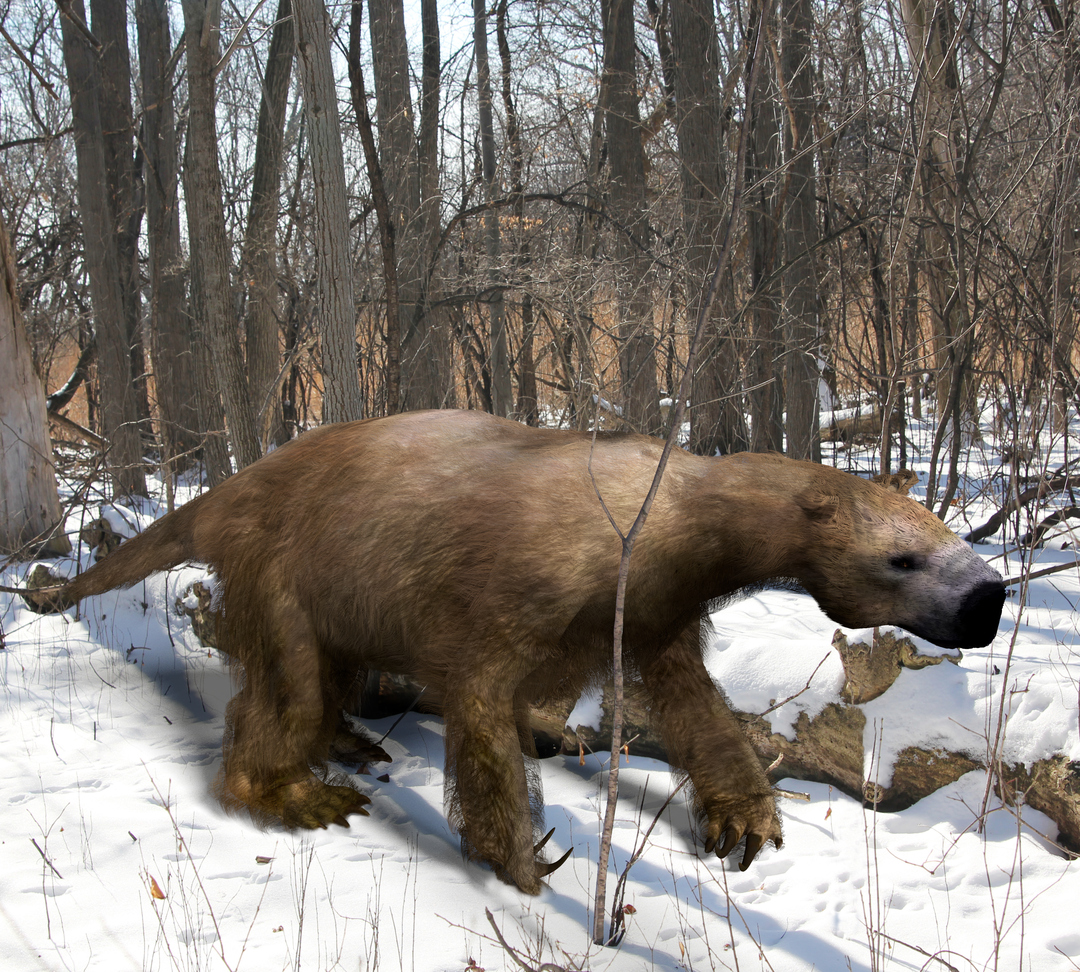Geologists discover claw-marked tunnels dug by a massive ancient sloth or armadillo


Geologists have discovered hundreds of networks of mysterious caves in Brazil that they believe were dug by an enormous prehistoric animal of some kind, such as a giant sloth or giant armadillo, Discover reports. "I'd never seen anything like it before," said Amilcar Adamy, who first stumbled upon a burrow in 2010.
The caves were clearly not formed by any natural geological process — and besides, the walls are covered in gigantic claw marks. Another geologist, Heinrich Frank, separately discovered "paleoburrows," including one that was four feet wide and an estimated 250 feet long. Once he began looking for the tunnels, they turned up everywhere. "In these burrows, sometimes you get the feeling that there's some creature waiting around the next curve — that's how much it feels like a prehistoric animal den," said Frank. He's found more than 1,500 just in the Brazilian state of Rio Grande do Sul.
Frank added: "There's no geological process in the world that produces long tunnels with a circular or elliptical cross-section, which branch and rise and fall, with claw marks on the walls. I've [also] seen dozens of caves that have inorganic origins, and in these cases, it's very clear that digging animals had no role in their creation."
The Week
Escape your echo chamber. Get the facts behind the news, plus analysis from multiple perspectives.

Sign up for The Week's Free Newsletters
From our morning news briefing to a weekly Good News Newsletter, get the best of The Week delivered directly to your inbox.
From our morning news briefing to a weekly Good News Newsletter, get the best of The Week delivered directly to your inbox.
The mystery deepened in 2015, when Adamy found a paleoburrow with branches totaling 2,000 feet in length and shafts that were originally six feet tall by three to five feet wide. "This wasn't made by one or two individuals," said Adamy. "It was made by many, over generations." Now there are other known burrows that are estimated to be 3,000 feet in length.
But why so big? Modern armadillos in Brazil are only 65 to 90 pounds and burrow 16-inch diameter holes that are 20 feet long. "What would dig one five feet wide and 250 feet long?" Frank wondered. "There's no explanation — not predators, not climate, not humidity. I really don't know."
And then there is the fact that there were North American giant sloths and giant armadillos, but there are no known paleoburrows in the United States. But that, too, could just be a matter of time. As Greg McDonald, a Bureau of Land Management paleontologist, told Discover: "The fact that we don't have them here could simply be that we've overlooked them."
A free daily email with the biggest news stories of the day – and the best features from TheWeek.com
Jeva Lange was the executive editor at TheWeek.com. She formerly served as The Week's deputy editor and culture critic. She is also a contributor to Screen Slate, and her writing has appeared in The New York Daily News, The Awl, Vice, and Gothamist, among other publications. Jeva lives in New York City. Follow her on Twitter.
-
 Tea with Judi Dench: ‘touching’ show is must-watch Christmas TV
Tea with Judi Dench: ‘touching’ show is must-watch Christmas TVThe Week Recommends The national treasure sits down with Kenneth Branagh at her country home for a heartwarming ‘natter’
-
 Codeword: December 24, 2025
Codeword: December 24, 2025The daily codeword puzzle from The Week
-
 Crossword: December 24, 2025
Crossword: December 24, 2025The daily crossword from The Week
-
 ABC News to pay $15M in Trump defamation suit
ABC News to pay $15M in Trump defamation suitSpeed Read The lawsuit stemmed from George Stephanopoulos' on-air assertion that Trump was found liable for raping writer E. Jean Carroll
-
 Judge blocks Louisiana 10 Commandments law
Judge blocks Louisiana 10 Commandments lawSpeed Read U.S. District Judge John deGravelles ruled that a law ordering schools to display the Ten Commandments in classrooms was unconstitutional
-
 ATF finalizes rule to close 'gun show loophole'
ATF finalizes rule to close 'gun show loophole'Speed Read Biden moves to expand background checks for gun buyers
-
 Hong Kong passes tough new security law
Hong Kong passes tough new security lawSpeed Read It will allow the government to further suppress all forms of dissent
-
 France enshrines abortion rights in constitution
France enshrines abortion rights in constitutionspeed read It became the first country to make abortion a constitutional right
-
 Texas executes man despite contested evidence
Texas executes man despite contested evidenceSpeed Read Texas rejected calls for a rehearing of Ivan Cantu's case amid recanted testimony and allegations of suppressed exculpatory evidence
-
 Supreme Court wary of state social media regulations
Supreme Court wary of state social media regulationsSpeed Read A majority of justices appeared skeptical that Texas and Florida were lawfully protecting the free speech rights of users
-
 Greece legalizes same-sex marriage
Greece legalizes same-sex marriageSpeed Read Greece becomes the first Orthodox Christian country to enshrine marriage equality in law
